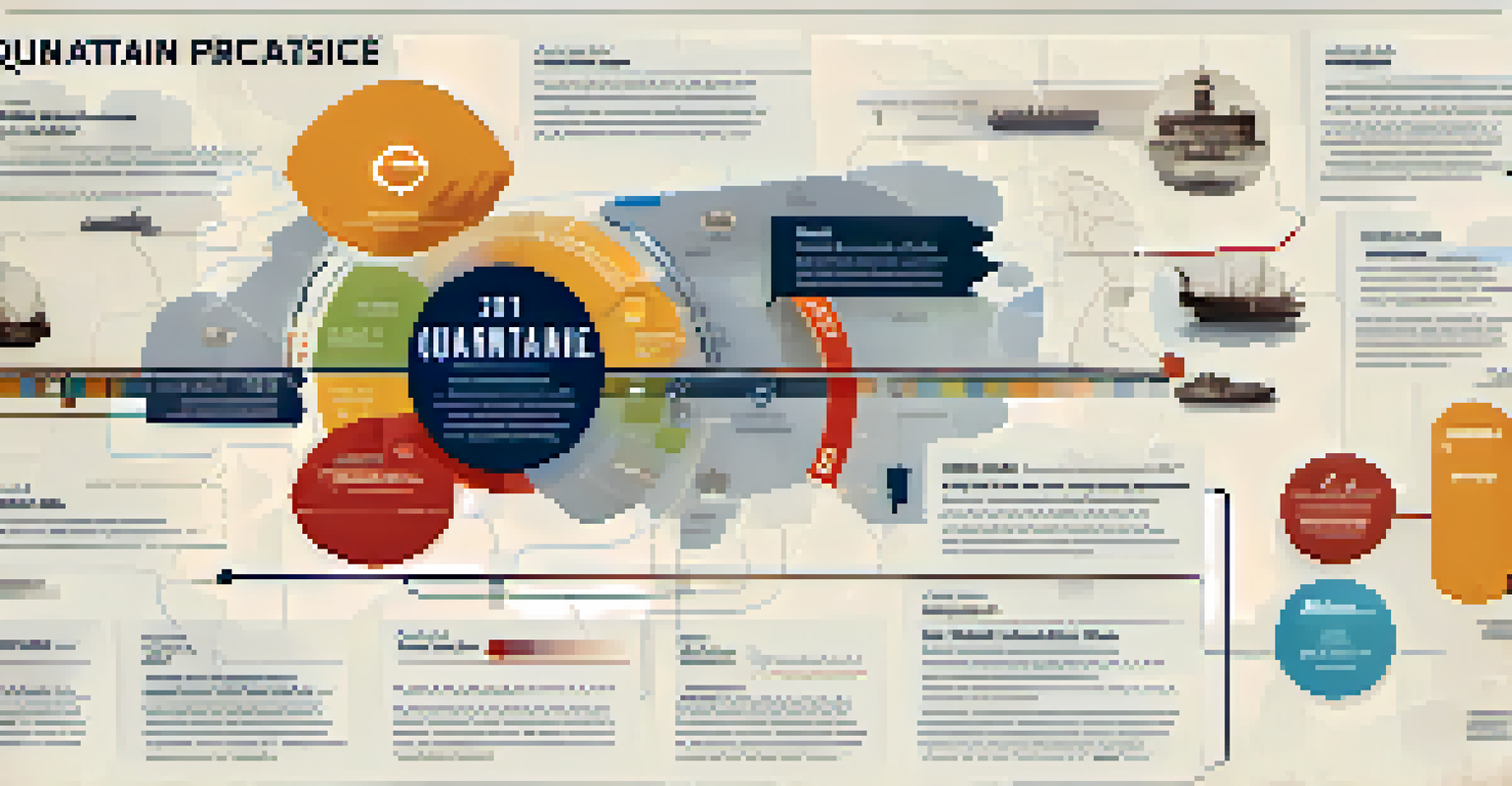Quarantine Measures: Historical and Modern Perspectives Explained

The Origins of Quarantine: A Historical Overview
Quarantine measures date back to ancient times, with one of the earliest recorded instances occurring in the 14th century. During the Black Death, ships arriving in Venice were required to anchor offshore for 40 days before passengers could disembark. This practice, known as 'quarantena,' aimed to prevent the spread of the bubonic plague, setting a precedent for future public health measures.
Quarantine is a measure of public health that isolates individuals who may have been exposed to a contagious disease to prevent further spread.
Fast forward to the 17th century, and we see similar practices in cities like Marseille, which implemented strict isolation protocols during outbreaks. These early quarantine efforts were crucial in shaping our understanding of disease transmission and the importance of isolation in controlling epidemics.
Quarantine has evolved significantly since these early days, but the fundamental principle remains the same: to separate and restrict the movement of people to prevent disease spread. This historical context helps us appreciate the modern practices we see today.
Understanding Modern Quarantine: Definition and Purpose
In contemporary contexts, quarantine refers to the separation of individuals who may have been exposed to a contagious disease. Its primary purpose is to monitor symptoms and prevent the potential spread of infections, especially during public health emergencies. Unlike isolation, which separates those who are confirmed to be ill, quarantine focuses on those who are at risk but not yet symptomatic.

Modern quarantine measures are often enforced by health authorities and can include home isolation, designated quarantine facilities, or travel restrictions. These measures have become particularly significant in managing outbreaks of diseases like Ebola, Zika, and most recently, COVID-19.
Quarantine's Historical Roots
Quarantine practices date back to the 14th century during the Black Death, influencing modern public health measures.
The effectiveness of quarantine relies on clear communication and adherence to guidelines. Understanding its purpose helps individuals appreciate its importance in safeguarding public health.
Key Historical Epidemics that Shaped Quarantine Practices
Throughout history, various epidemics have influenced quarantine practices worldwide. The plague outbreaks in Europe, for instance, led to the establishment of formal quarantine laws and health boards. These laws were instrumental in controlling the spread of infectious diseases during critical periods.
In times of crisis, effective communication is as essential as the measures themselves to ensure compliance and trust within the community.
Similarly, the 1918 influenza pandemic prompted countries to adopt stricter measures to contain the virus. Public health officials recognized the necessity of social distancing and the efficacy of quarantine in mitigating the spread of the illness, leading to policies that are reminiscent of those seen during the COVID-19 pandemic.
These historical events have not only shaped our current understanding of quarantine but have also underscored the importance of adaptability in public health responses to emerging threats.
Technological Advances in Quarantine Enforcement
With the rise of technology, modern quarantine enforcement has undergone significant changes. Contact tracing apps, health monitoring systems, and online reporting tools have streamlined the process of identifying and monitoring individuals who may need to be quarantined. These technological advancements enhance the ability to contain outbreaks swiftly and effectively.
For instance, during the COVID-19 pandemic, many countries implemented mobile applications that facilitated contact tracing, allowing health authorities to alert individuals who may have been exposed to the virus. This proactive approach has proven crucial in managing outbreaks more efficiently than traditional methods alone.
Modern Quarantine's Purpose
Today's quarantine aims to separate individuals exposed to contagious diseases to monitor symptoms and prevent outbreaks.
The integration of technology into quarantine practices reflects a broader trend towards data-driven public health strategies, making it easier for authorities to respond to new challenges as they arise.
Cultural Perspectives on Quarantine Throughout History
Cultural attitudes toward quarantine have varied widely throughout history. In some societies, quarantine has been met with compliance and understanding, while in others, it has sparked resistance and fear. For example, during the cholera outbreaks in the 19th century, certain communities viewed quarantine as a necessary evil, while others resisted it due to economic or social implications.
These cultural differences can significantly influence how quarantine measures are received and enforced. Understanding the societal context is essential for public health officials to implement effective strategies that resonate with affected communities.
Ultimately, the interplay between culture and public health measures highlights the need for a tailored approach to quarantine, ensuring that it is both effective and culturally sensitive.
The Role of Public Health Communication in Quarantine
Effective public health communication plays a vital role in the success of quarantine measures. Clear messaging helps individuals understand the reasons for quarantine, the expected duration, and the importance of adhering to guidelines. During crises, misinformation can spread as quickly as the virus itself, making accurate communication even more critical.
Engaging with communities through multiple channels, such as social media, press releases, and community meetings, can foster trust and encourage compliance. When people feel informed and valued, they are more likely to cooperate with quarantine measures.
Role of Communication in Quarantine
Effective public health communication is crucial for ensuring compliance with quarantine measures and alleviating fears.
Moreover, transparent communication can help alleviate fears and misconceptions surrounding quarantine, ultimately leading to better community health outcomes.
Lessons Learned: The Future of Quarantine Practices
Reflecting on the experiences gained from past and recent epidemics, it's clear that quarantine practices must evolve. The COVID-19 pandemic has highlighted the need for flexible and responsive quarantine measures that can adapt to different situations. As new diseases emerge, the lessons learned will inform future strategies and public health policies.
Additionally, greater emphasis on mental health support during quarantine is crucial. Understanding the psychological impact of isolation can lead to better resources and support systems for individuals undergoing quarantine, ensuring that their well-being is prioritized.

Looking ahead, a collaborative approach involving public health officials, communities, and technology will be essential for developing effective quarantine measures that safeguard public health while respecting individual rights.